Windswept by Charles Sowers
Hundreds of spinning blades reveal the invisible patterns of the wind in American artist Charles Sowers' kinetic installation on the facade of the Randall Museum in San Francisco (+ movie).
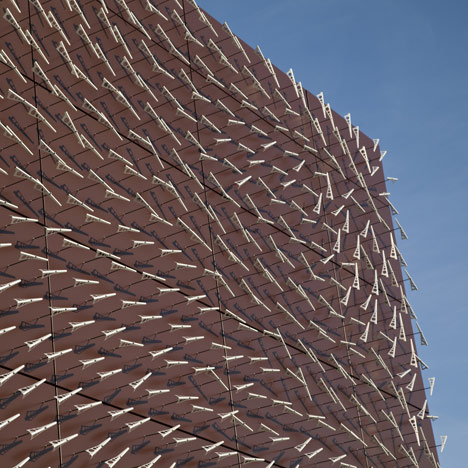
The installation, titled Windswept, consists of 612 rotating aluminium weather vanes mounted on an outside wall.
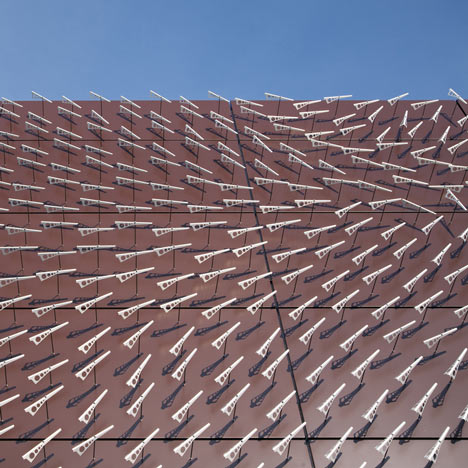
As gusts of wind hit the wall, the aluminium blades spin not as one but independently, indicating the localised flow of the wind and the way it interacts with the building.
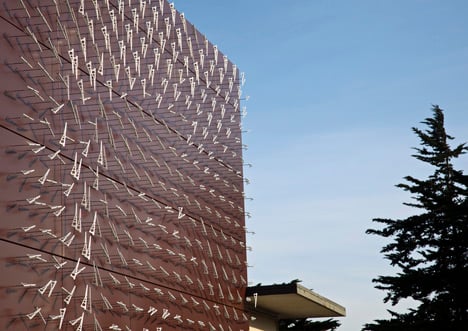
"Our ordinary experience of wind is as a solitary sample point of a very large invisible phenomenon," said Sowers. "Windswept is a kind of large sensor array that samples the wind at its point of interaction with the Randall Museum building and reveals the complexity and structure of that interaction."
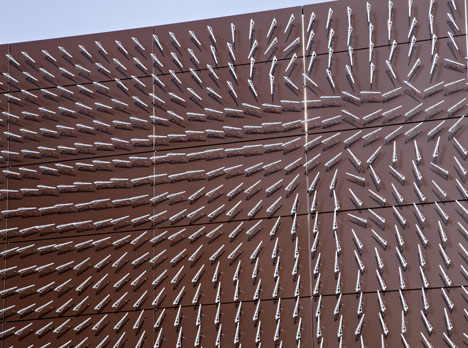
"I’m generally interested in creating instrumentation that allows us insight into normally invisible or unnoticed phenomena," he added.
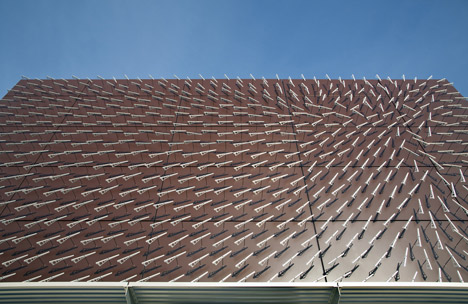
We've featured a number of kinetic installations on Dezeen recently, including an undulating web that ripples like the surface of water and a gallery that lets visitors play in the rain without getting wet.
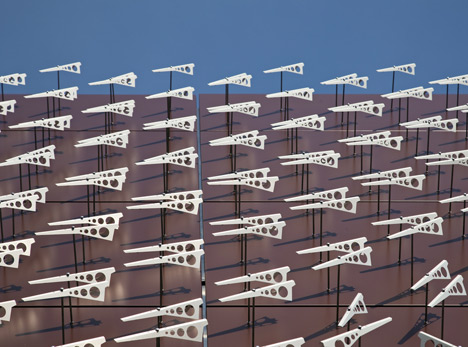
See all our stories about installations »
See all our stories about weather »
Photographs are by Bruce Damonte.
Windswept is a wind-driven kinetic facade that transforms a blank wall into an observational instrument that reveals the complex interactions between wind and environment.
Windswept consists of 612 freely rotating wind direction indicators mounted parallel to the wall creating an architectural scale instrument for observing the complex interaction between wind and the building. The wind arrows serve as discrete data points indicating the direction of local flow within the larger phenomenon. Wind gusts, rippling and swirling through the sculpture, visually reveal the complex and ever-changing ways the wind interacts with the building and the environment.
I’m generally interested in creating instrumentation that allows us insight into normally invisible or unnoticed phenomena. The Randall site, like many in San Francisco, is characterised to a great extent by its relationship to the wind. Climatically, onshore winds bring warm weather from the central valley while offshore wind bring us our famous San Francisco chilly weather.
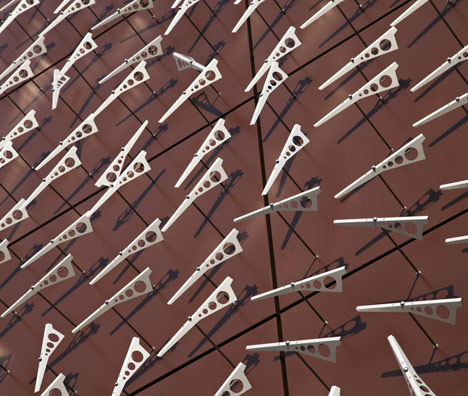
Windswept seeks to transform a mundane and uninspired architectural façade (the blank wall of the theatre) into a large scale aesthetic/scientific instrument, to reveal information about the interaction between the site and the wind. Our ordinary experience of wind is as a solitary sample point of a very large invisible phenomenon. Windswept is a kind of large sensor array that samples the wind at its point of interaction with the Randall Museum building and reveals the complexity and structure of that interaction.
Windswept is 20' high x 35' long. It is installed on an 1940s board-formed concrete building. The whole piece sits off the wall to allow an equal volume of air to enter a ventilation intake mounted in the middle of the existing wall. The wind arrows are made of brake-formed anodised aluminium. The arrow axles are mounted to a standard metal architectural panel wall system consisting of 25 panels. The panels have holes punched in a 12" x 12" grid pattern, into which the installation contractor secured rivet nuts to accept the stainless steel axles. Once the panels were installed the arrow assemblies were threaded into the rivet nuts.
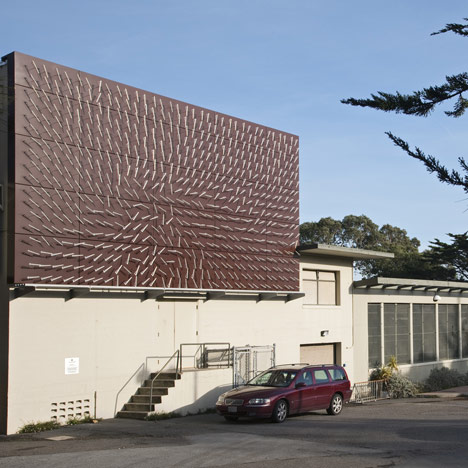
Artist: Charles Sowers Studios, LLC
Project: Windswept
Location: Randal Museum, 199 Museum Way, San Francisco, CA
Size: 35’ length / 20’ height
Client: San Francisco Arts Commission/Randall Museum
Contractor: Rocket Science
Engineer: Hom-Pisano Engineers
Project Completion: 11/19/2010